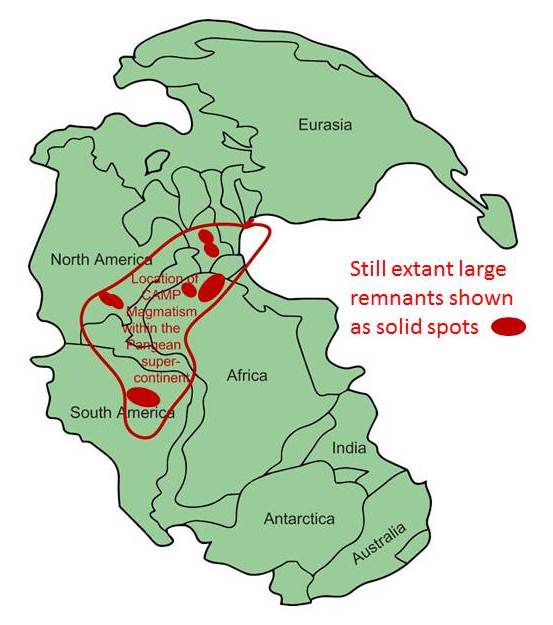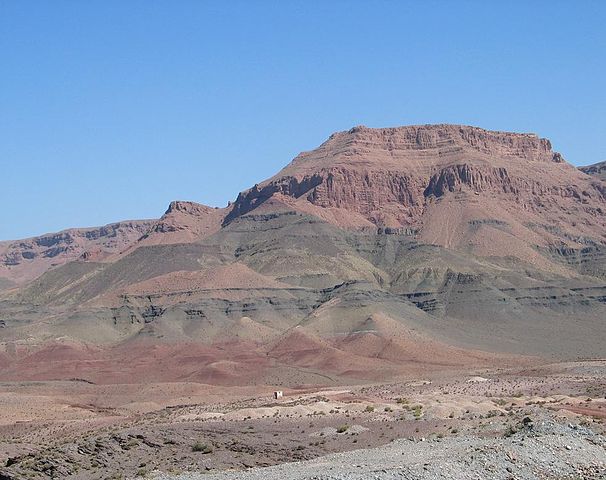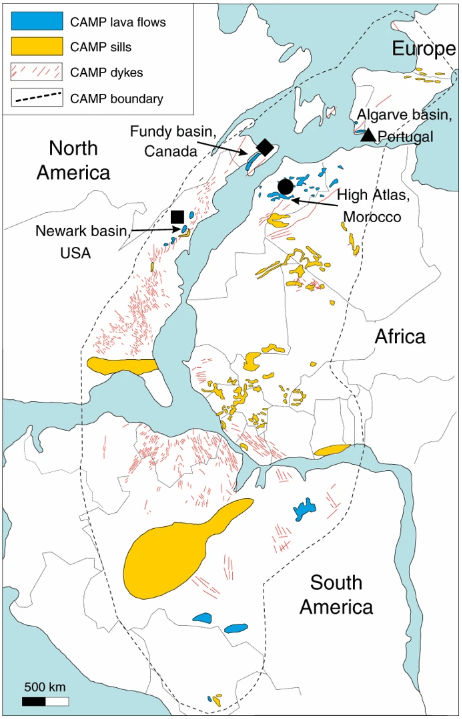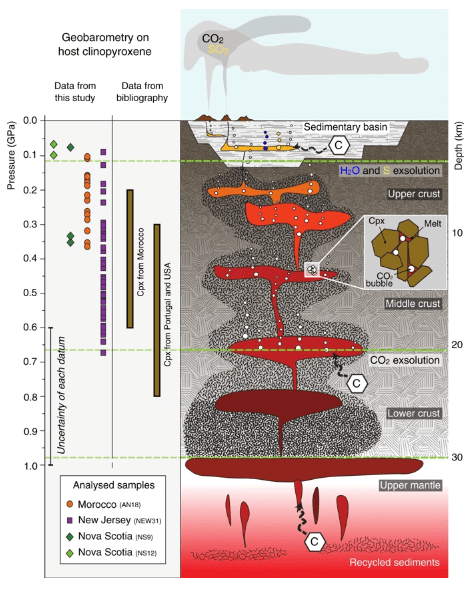200 million years ago, a mass extinction event wiped out about 76% of all species on Earth—both terrestrial and marine. That event was called the end-Triassic extinction, or the Jurassic-Triassic (J-T) extinction event. At that time, the world experienced many of the same things as Earth is facing now, including a warming climate and the acidification of the oceans.
A new paper shows that pulses of volcanic eruptions were responsible, and that those pulses released the same amount of CO2 as humans are releasing today.
Researchers have been trying for decades to understand what could have caused the J-T extinction event. The theoretical causes include an asteroid or comet impact, gradual changes in the Earth’s cycles and processes, and volcanic eruptions. The J-T extinction is one of five mass extinctions in Earth’s history, and the scientific debate about the causes is fascinating.
While there’s some evidence to support each of those causes, the case for volcanic eruptions is becoming clearer. In a new paper, a team of researchers points the finger at massive volcanic eruptions in what is now the Atlantic Ocean.
“CAMP eruptions were rapid and potentially catastrophic for both climate and biosphere.”
Capriolo et al, 2020
The paper is titled “Deep CO2 in the end-Triassic Central Atlantic Magmatic Province.” The lead author is Manfredo Capriolo from the University of Padolo, in Italy. The paper is published in the the journal Nature Communications.
The authors focused on what are called Large Igneous Provinces, or LIPs. LIPs are enormous areas of igneous rocks and lava flows that come from magma rising through the Earth’s crust. In particular, the team of researchers focused on the Central Atlantic Magmatic Province, or CAMP. CAMP is Earth’s largest continental LIP.



At the time of the J-T extinction, Earth’s land mass was one large continent called Pangaea. CAMP was roughly in the center of Pangaea. Some of the left-over elements of CAMP are still visible today.



Volcanic eruptions from Large Igneous Provinces coincide with mass extinctions during the Phanerozoic era. The Phanerozoic era began about 540 million years ago, and is the current era. It’s the era during which there is abundant life on Earth.
Because eruptions coincide with extinctions, it suggests a cause-effect relationship. To investigate that relationship, the authors examined the nature and the timing of the rock extruded to the surface during those eruptions. As the authors write in their introduction: “In order to fully understand this relationship, it is necessary to constrain the quantity and type of degassed magmatic volatiles, and to determine the depth of their source and the timing of eruption.”
The authors looked at over 200 samples of basaltic lava flows and sills in the CAMP. There are a host of chemicals released during eruptions that can wreak havoc on the environment and climate. They include CO, CO2, CH4, SO2, H2S, HCl, and CH3Cl. The team of scientists were primarily concerned with CO2.



Their results suggest that the CAMP produced up to 100,000 gigatons of CO2 and that part of that came from the middle-lower crust and mantle. The origins of that carbon dioxide are important, because it suggests that the eruptions were very rapid, and catastrophic. The researchers say that the eruptions were like pronounced “pulses” of CO2. Because those pulses were so rapid, they overwhelmed the Earth’s capacity to re-absorb it. “CAMP eruptions were rapid and potentially catastrophic for both climate and biosphere.”



The pulsing nature of these eruptions made them especially damaging. The pulses were caused by bubbles of CO2 and elemental carbon in Earth’s “transcrustal magmatic plumbing system” according to the paper. These CO2 bearing bubbles were like “batches of ascending volatiles entrapped in crystalline mush shortly prior to its mobilization and prior to eruption.”
The magma was saturated with CO2 and “can explain the pulsed eruptive style of CAMP, where CO2 acts as propellant for magma ascent, causing rapid and violent eruptive pulses.” The authors point to the nature of some modern-day eruptions in Hawaii, where high concentrations of CO2 in the basalt caused magma to rise over 5 km to the surface, and to act like fountains when it erupted.
In the conclusion of the paper the authors point out that the amount of CO2 produced in these eruptions is roughly equal to the amount of CO2 released into the atmosphere by humans in the 21st century. Even a single pulse may have done so.
“In fact, a single short-lived CAMP magmatic pulse … may emit about 5?×?1016?mol CO2, roughly the same total amount of projected anthropogenic emissions over the 21st century, according to the Representative Concentration Pathway 4.5,” the researchers write. The (Representative Concentration Pathway is a GHG concentration trajectory used by the IPCC.)
So there we have it. We’re managing to release as much CO2 as a single, massive volcanic pulse did hundreds of millions of years ago. “This scenario for rapid CO2 emissions predicts a global temperature increase of about 2?°C and an oceanic pH decrease of about 0.15 units over 0.1 kyrs, and suggests that the end-Triassic climatic and environmental changes, driven by CO2 emissions, may have been similar to those predicted for the near future.”
People who don’t believe the science behind human-caused climate change often point to volcanoes as the real culprits. Earth stores a huge amount of carbon in rock—far more than in the oceans or the atmosphere. And while some of it escapes into the atmosphere from volcanoes, volcanic emissions of CO2 in our age are tiny compared to human emissions.
Eruptions in Iceland and elsewhere can curtail airline traffic for a while, and they appear impressive. But modern day eruptions don’t come close to those at the time of the J-T extinction.
It’s our emissions that are driving global climate change, and as rigorous science like this study shows us, the consequences can be dire.
More:
- Research Paper: Deep CO2 in the end-Triassic Central Atlantic Magmatic Province
- Wikipedia: Triassic–Jurassic extinction event
- Universe Today: A Rapid Rise in Temperature Led to the Worst Extinction in our Planet’s History

